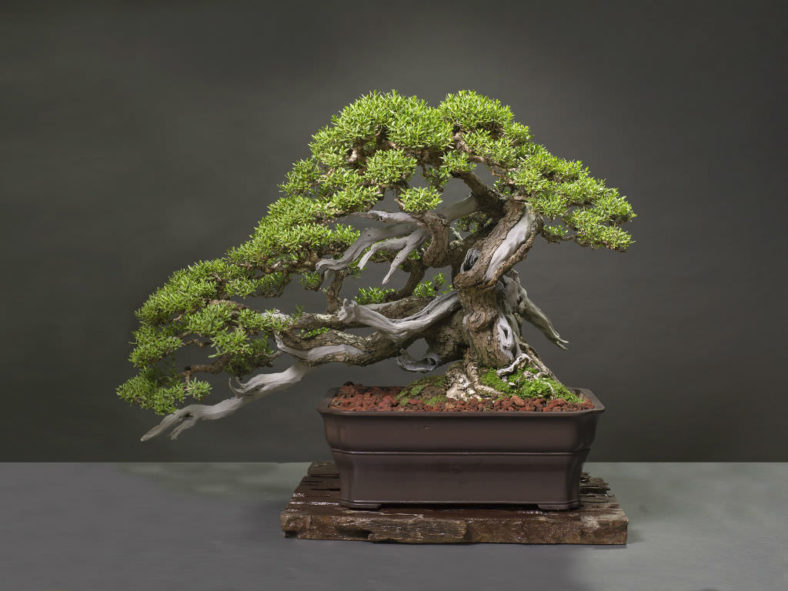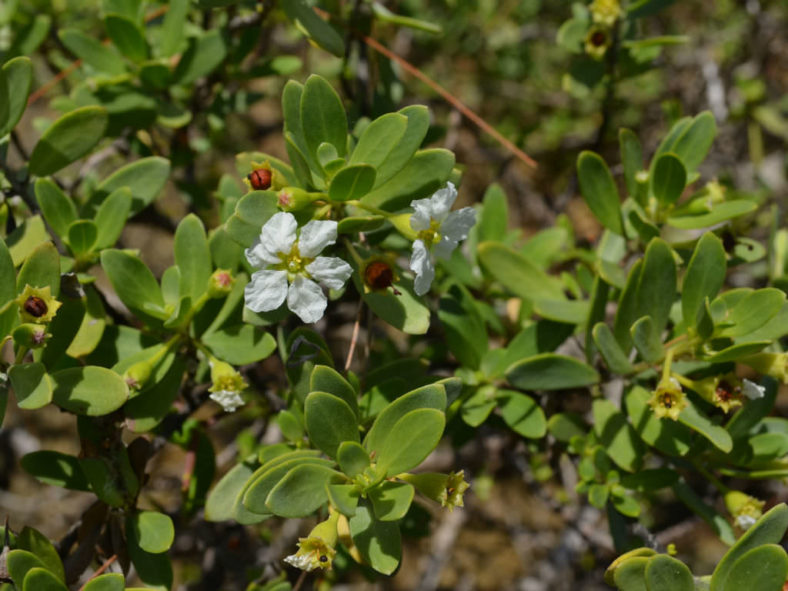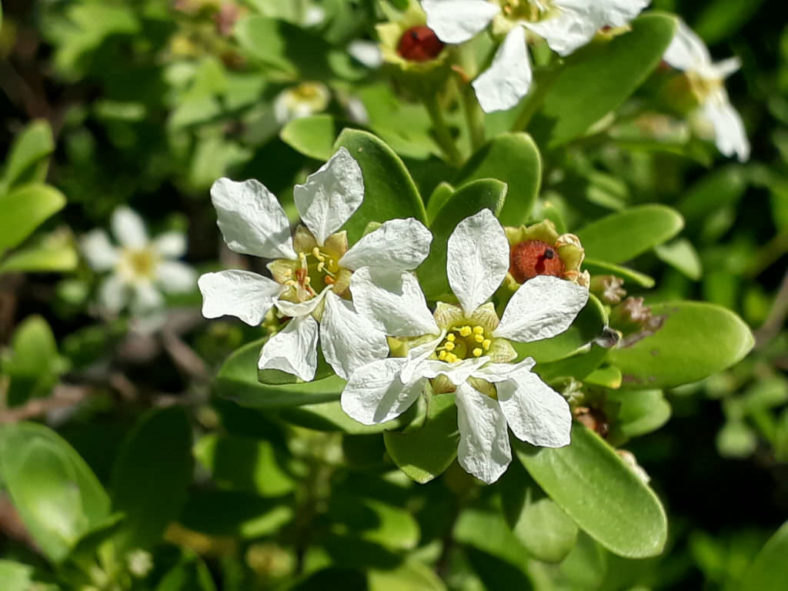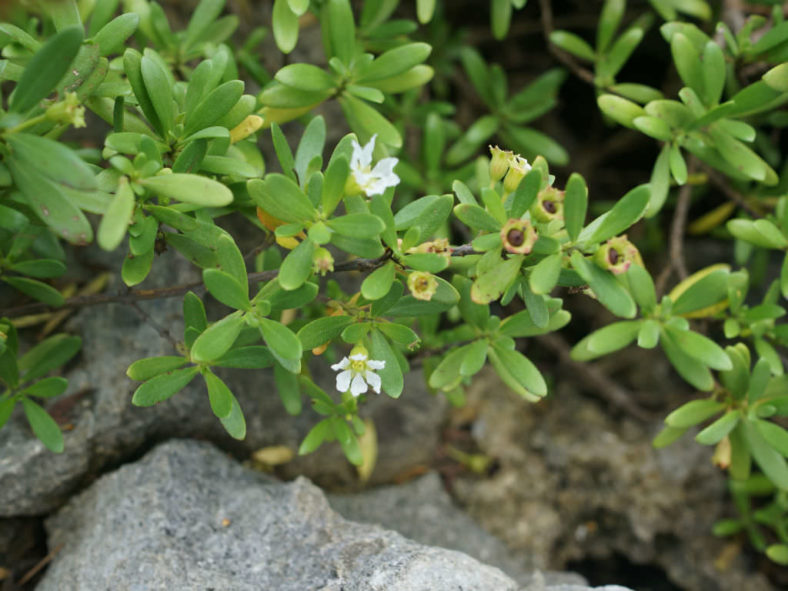Scientific Name
Pemphis acidula J.R.Forst. & G.Forst.
Common Name(s)
Shrubby Coral Pemphis, Small-leaved Mangrove
Synonym(s)
Lythrum pemphis, Melanium fruticosum, Millania rupestris
Scientific Classification
Family: Lythraceae
Subfamily: Lythroideae
Genus: Pemphis
Description
Pemphis acidula is a mangrove that can grow as a densely branched evergreen shrub or small tree reaching a height of up to 20 feet (6 m). The leaves are succulent, grayish-green, and arranged in an opposite pattern on thick, woody branches. They are pointed, narrowly elliptic or lance-shaped, measuring up to 1 inch (2.5 cm) long and 0.4 inches (1 cm) wide. Flattened hairs are found all over the leaves.
The flowers are small, cup-shaped, white or pale pink, and can reach a diameter of up to 0.4 inches (1 cm). They usually appear throughout the year. The fruits are small, reddish, and contain around 20 seeds.
The tree is sometimes harvested from the wild for local use as food, medicine, and a source of timber. The wood is of very good quality, but because of its small size, the poor form of the bole, and its limited supply, it is only used on a small and local scale.

Hardiness
USDA hardiness zones 10a to 11b: from 30 °F (−1.1 °C) to 50 °F (+10 °C).
How to Grow and Care
The plant is sometimes grown as ornamental. There is a significant trade in seeds and live plants for growing as a bonsai, especially in Asia.
Shrubby Coral Pemphis grows on various soils, including fine coastal sand, coastal limestone rock, cliffs, coral conglomerate, limestone bedrock outcrops of atolls, etc. It can grow in places where seawater wet its roots regularly during the high tide.
It is propagated by seeds, wildlings, and root suckers. Seeds are not directly sown in the field. Nursery-raised seedlings are used for outplanting. Mature fruits can be easily identified by their brown color, and each fruit contains 20 to 30 tiny seeds that can be collected by gently pressing the matured fruits. Collected seeds should be subjected to a floating test, and seeds that float are viable. Seeds may be soaked for one to two days before planting in containers. Nursery-raised seedlings 15 to 20 cm can be used for outplanting. Propagation by wildlings is relatively less successful compared to nursery-raised seedlings. It can also be propagated by planting straight stems with roots in suitable places. It needs to be pruned to get straight poles.
Origin
Pemphis acidula is found in coastal locations in the tropical areas of the Indo-Pacific.
Links
- Back to genus Pemphis
- Succupedia: Browse succulents by Scientific Name, Common Name, Genus, Family, USDA Hardiness Zone, Origin, or cacti by Genus
Photo Gallery
Click on a photo to see a larger version.



